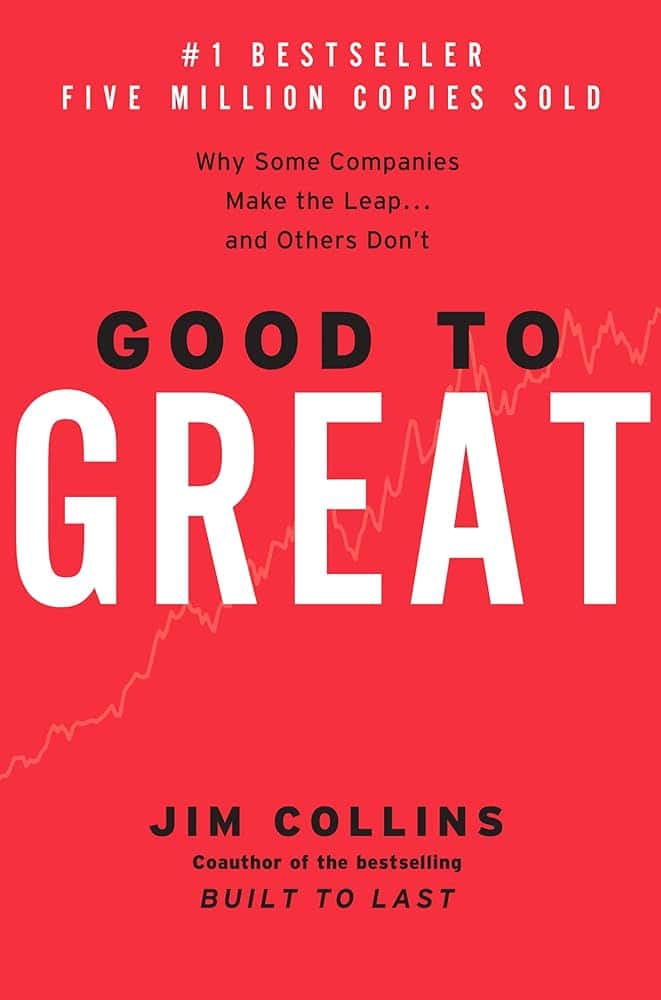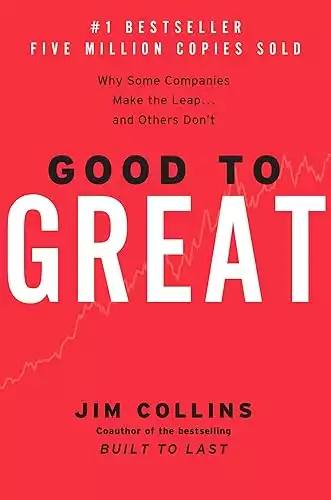Overview : Good to Great
- Book Title: Good to Great
- Author: Jim Collins
- Publication Date: October 2001
- price: $15.00
- Pages: 350
Overview of the Book
Jim Collins is a renowned author, researcher, and business consultant known for his extensive studies on company performance and leadership. His work bridges the gap between academic insights and practical strategies, inspiring readers to elevate their organizations from mediocrity to greatness.
Introduction
In the ever-evolving world of finance and business, few books have made as significant an impact as Jim Collins' "Good to Great: Why Some Companies Make the Leap... and Others Don't." Published in 2001, this seminal work continues to shape the strategies of financial institutions, investment firms, and corporations worldwide. As we navigate the complexities of modern markets, from traditional investing to the rise of cryptocurrencies, Collins' insights remain remarkably relevant.
Book Summary
Collins and his research team spent five years analyzing 1,435 companies to identify those that made a sustainable leap from good to great performance. Their rigorous methodology led them to 11 companies that outperformed the market by a factor of three over 15 years. These companies, including financial powerhouses like Wells Fargo, provide the foundation for Collins' theories on corporate excellence.
Key Concepts:
- The Hedgehog Concept: Focusing on the intersection of passion, economic drivers, and areas of excellence
- Level 5 Leadership: Combining personal humility with professional will
- First Who, Then What: Prioritizing talent acquisition before strategy
- Confronting the Brutal Facts: Creating a culture of candor and reality-based decision making
- The Flywheel Effect: Building momentum through consistent, incremental progress
Analysis of Themes
Collins' work is particularly relevant in the finance sector, where market volatility and regulatory changes demand both resilience and adaptability. The Hedgehog Concept, for instance, can be applied to investment strategies, encouraging firms to focus on their core competencies rather than chasing every market trend.
The concept of Level 5 Leadership challenges the stereotype of the charismatic Wall Street executive, suggesting that humility and determination are more valuable traits for long-term success. This insight is especially pertinent in an era where ethical leadership and corporate responsibility are increasingly scrutinized.
"Great vision without great people is irrelevant." - Jim Collins
In the context of personal finance, Collins' principles can guide individual investors. The discipline to stick to a well-researched strategy, rather than reacting to short-term market fluctuations, echoes the book's emphasis on sustained effort over quick fixes.
Writing Style
Collins' writing is clear and accessible, blending academic rigor with practical insights. He uses compelling metaphors, such as the flywheel and the hedgehog, to illustrate complex business concepts. This approach makes "Good to Great" engaging for both seasoned financial professionals and those new to business literature.
Strengths and Weaknesses
Strengths:
- Data-driven approach lends credibility to findings
- Actionable insights applicable across various sectors of finance
- Timeless principles that remain relevant in changing market conditions
Weaknesses:
- Some case study companies have faced challenges since publication
- Limited focus on rapid technological changes in finance (e.g., fintech, blockchain)
- May not fully address the unique challenges of startups or disruptive business models
Comparison to Other Works
While "Good to Great" shares similarities with other business classics like Peter Drucker's "The Effective Executive" or Clayton Christensen's "The Innovator's Dilemma," Collins' work stands out for its extensive research and focus on sustainable excellence. In the finance realm, it complements works like Benjamin Graham's "The Intelligent Investor" by providing a broader organizational perspective to complement Graham's investment-specific wisdom.
Application to Modern Financial Trends
Despite being written before the rise of cryptocurrencies and the 2008 financial crisis, many of Collins' principles apply to these modern contexts. The emphasis on disciplined leadership and adherence to core principles is particularly relevant in the volatile world of crypto investing. Similarly, the concept of confronting brutal facts resonates in post-2008 risk management practices in banking and financial services.
Highlights from Good to Great
- Level 5 Leadership: Successful companies are led by humble yet determined leaders.
- First Who, Then What: Get the right people on the bus before deciding on a direction.
- Confront the Brutal Facts: Face harsh realities while maintaining unwavering faith in success.
- Hedgehog Concept: Focus on what you can be the best at, what drives your economic engine, and what you're passionate about.
- Culture of Discipline: Foster disciplined people, actions, and thought processes.
- Technology Accelerators: Use technology as a tool to enhance success, not as a primary driver.
Conclusion
"Good to Great" remains an essential read for anyone in the finance industry, from personal financial advisors to corporate strategists. Its enduring principles provide a framework for building resilient organizations capable of weathering market volatility and capitalizing on long-term trends. While the financial landscape has evolved significantly since its publication, the core tenets of disciplined people, thought, and action continue to differentiate great companies from merely good ones.
For those looking to apply Collins' insights to their financial careers or investment strategies, "Good to Great" offers a roadmap to excellence that has stood the test of time. Whether you're managing a hedge fund, developing fintech solutions, or planning your personal investment portfolio, the lessons from this book can help you make the leap from good to great.
Ready to transform your financial approach? Purchase "Good to Great" here and start your journey from good to great today!





